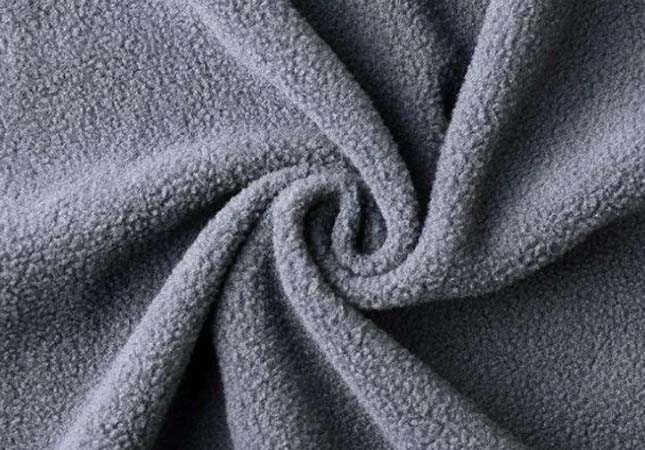What is Polar Fleece?
Polar fleece is also named fleece, which is the main type of knitted fabrics. It is commonly made of polyester and is soft and warm. Fleece was first produced in Taiwan,China and Quanzhou,China in the early 1990s by large circular machines-- a kind of weaving machine, dyed at elevated temperature, under extreme pressure and then finished by fabric finishing machines.
Polar fleece has a tiny ingot knitted structure, which is woven on a large circular machine. The grey fabric will be dyed after knitting, and then processed by various complex finishing processes such as brushing, carding, shearing, and polarizing.
One side of the fabric is brushed so the surface is fluffy and dense without easy fuzzing and pilling. And the back of the fabric is sparse and has a well-proportioned surface, short fluff, clear texture and excellent fluffy elasticity, which made it become the best fabric to keep out the cold on winter days. The fleece can also be compounded with all fabrics to make a better effect of keeping out the cold. For example: polar fleece & polar fleece, polar fleece & denim, polar fleece & lamb fleece, polar fleece and mesh cloth by adding waterproof and breathable film in the middle layer.

The production level of polar fleece in Jiangsu, China is most developed, where polar fleece fabric's quality is relatively higher, while the price of polar fleece in Zhejiang, China is relatively higher.
Types of Fleece
1. Plain Fleece and Printed Fleece
Polar fleece can be divided into plain and printed. According to personal requirements, the plain fleece can be divided into drop-needle polar fleece, emboss polar fleece and jacquard polar fleece.
The Printed polar fleece can be categorized into more than 200 types according to the different paddle materials, such as penetration printing, rubber paddle printing, transfer printing color strips. The wide variety means the printed polar fleece has novel and distinct patterns in colorful designs and natural and smooth touching, which are favored by people from all around the world.
2. Composite Polar Fleece and Double-Sided Polar Fleece
The composite polar fleece is made of two kinds of polar fleece of the same quality or different, which are processed and bonded together by a composite machine. While the double-sided polar fleece is a double-sided polar fleece treated with pilling. The price of composite polar fleece is relatively higher, and it is typically used to make blankets. Because the fibers of the polar fleece have static electricity with a floating effect, which brings dust to the fabric or clothes, but normally it will not stick together when mixed with other clothes. We can add some antistatic agents during the finishing of the fabric to reduce the phenomenon of ash absorption by the polar fleece.
Quality & Price
The price of polar fleece is generally lower than that of woolen fabrics because inevitable fabric defects of polar fleece fabric influence on product quality and price such as horizontal strips (loom or yarn), knife marks or straight strips remained from shearing machines, indentations caused by stacking for too long, holes (brush machine), stains (dyeing) and water stains. Some of them can be avoided by adding spandex (up to 5%) during the weaving process. However, there are few factories that have the ability to achieve these technologies, so the defects are currently inevitable.
Long-fiber polar fleece is generally woven from polyester filament, and be marked as 150D96F, 150D48F, 150D144F, 150D288F, 75D72F, 75D144F, 100D144F, 100D288, etc. The higher F value is, the better the quality of the fabric will be and the higher price will be correspondingly. For example, 100D144F and 150D144F belong to ultra-fine polar fleece. And if the origin of a polar fleece is located in Shanghai or Jiangsu, Kunshan, Changzhou, Jiangyin, the quality and price of certain polar fleece will be relatively higher.
Polar fleece is mostly used to make clothes lining and also can be used in the production of scarves, hats, pillows and cushions. It is one of the most popular fabric in people’s daily lives.




